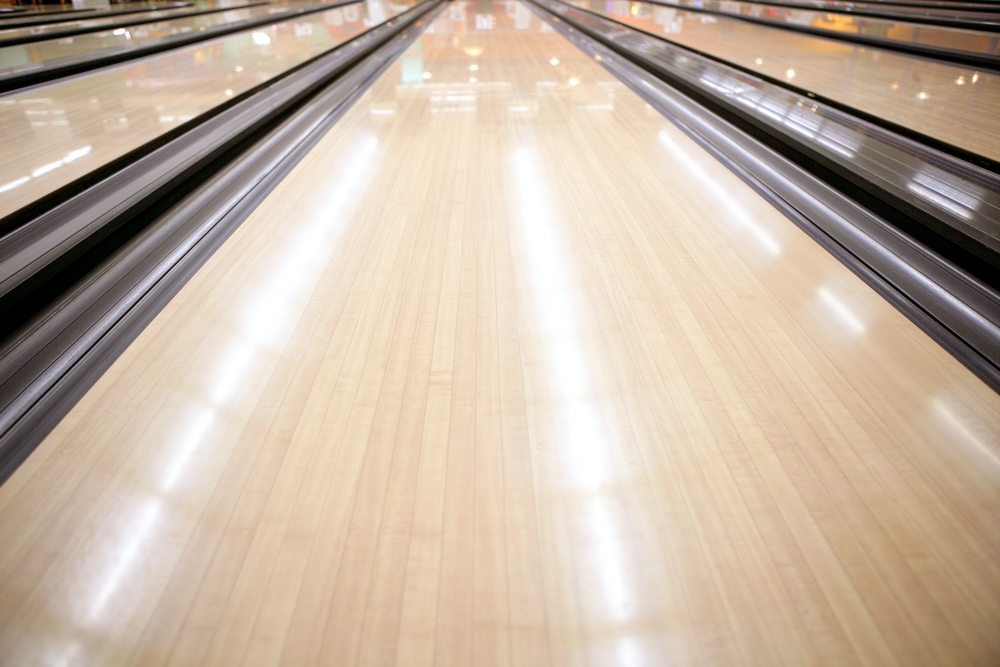
Bowling is governed by strict rules about play area dimensions, commonly referred to as the bowling lane. It’s a lengthy, linear rectangular alley composed of two gutters alongside to catch bowling balls.
The four basic components of a lane that have strict regulation are: the approach area, which includes a non-passable foul line, gutters or canals that run parallel to the lane's center, and the bowling pit is positioned at the end of the lane and houses the pin deck as well as any bowling pin gear.
The regulations are in place to ensure that no one has an unfair advantage over their competitors, keeping the playing field leveled regardless of which alley you visit.
We've done the heavy lifting for you and discussed in detail how long is a bowling alley, the basic components, the actual dimensions, and what it means for your gameplay.
Contents
- 1 How Long Is a Bowling Alley Lane?
- 2 The Major Bowling Lane Components
- 3 Are All Bowling Alleys the Same Length?
- 4 How Long/Wide is a Mini Bowling Alley?
- 5 Are Home Bowling Alleys Smaller Than Regulation Bowling Alleys?
- 5.1 Space Required for A Home Bowling Alley
- 5.2 Space Required for a Regulation Bowling Alley
- 5.3 Other Bowling Alley Size Considerations
- 5.4 Does Bowling Alley Size Matter?
- 5.5 How many boards are on a bowling lane?
- 5.6 How much does a home bowling alley cost?
- 5.7 How far apart is each pin?
- 5.8 Are all bowling lanes the same length?
- 5.9 Related Articles
How Long Is a Bowling Alley Lane?
A regulated bowling lane dimensions, including all the major parts, is sixty-two feet, ten, and three sixteenth inches (62 feet, 10 3/16 inches) (18.90 meters) long from the foul line to the very end of the pin deck.
When measured from the foul line to the head pin spot, it measures sixty feet (60 feet) (18.29 meters). The width, from gutter to gutter, is forty-one and a half inches (41.5 inches) (1.0541 meters) wide, give or take half a fourth of an inch (¼).
There are four distinct equipment parts that are included on any bowling lane that every player needs to know. In order of how they appear when a bowler is standing near the ball return, the parts are:
- The Approach: This area makes up fifteen feet at the start of the bowling lane. The approach should use this area to add momentum to the throw and impart some force to get the ball to the pins.
- The Foul Line: The foul line follows the approach and is a well-marked line. If the player oversteps this line, their throw is voided and they could sustain injuries.
- The Lane: This is the actual play area where the bowl is released onto and where the pins sit. Part of the lane surface is oiled to increase its smoothness and it adds difficulty.
- The Pin Deck: The final part of the lane makes up the pin deck, where the ten pins are kept, collected, and rearranged for each throw. The center of pin one to the back of the pin deck must be thirty-four, three sixteenth inches. Give or take 1/16 of an inch.
All of these components can vary in width and length when the lane is not a regulation lane.
The Major Bowling Lane Components
Bowling Alley Boards
The bowling alley lane is constructed out of boards made of wood and/or synthetic products. There are 39 boards with a width of roughly 1.06 inches (0.026924 meters) each.
The majority of the boards have the same appearance and are identical. Oil or conditioner is placed on the lane's boards for protection and by design or oil pattern.
Bowling Approach Area
The approach area must meet regulatory requirements and is a must in every bowling alley. This area must match the width or is wider than the lane.
It can't be smaller than the lane's width. In addition, the approach must be smooth and should be at least 15 feet (4.572 meters) long, measuring from the foul line backward.
What Are The Dots (Markings) on the Bowling Lane
On the approach, the dots or lane markings can be used only with the following specifications. The markings must be circular and placed along these measurements, starting at the foul line and moving backward. Each series of guides (line of dots) can only be placed in these locations:
- 2-6 inches (0.1524 meters)- typically seven guided dots at the foul line
- 3-4 feet (.944-1.2192 meters)
- 6-7 feet (1.8288-2.1336 meters)
- 9-10 feet (2.7432-3.048 meters)
- 11-12 feet (3.3528-3.6576 meters)- usually the second set of dots on the approach
- 14-15 feet (4.2672-4.572 meters)- typically at the start of the approach
Each guided series of dots should be parallel to the foul line, as in our example. The circular guides (dots) also correspond to lane boards 5, 10, 15, 20, 25, 30, and 35.
To give you an idea of placement, typically, the ball return can be found at the start of the approach area, along the bowler's walking route to the foul line.

Arrows on Bowling Lane
Section 1: The Front End of The Bowling Lane (The Skid Section)
Looking down the lane, beyond the foul line, after 12-16 feet (3.6576- 4.8768 meters), the bowling lane arrows must begin. Typically, it's seven guides or targets and can vary in shape. But the size must be is regulated to 1 ¼ inch (0.03175 meters) wide and six inches (0.1524 meters) long.
Boards 5, 10, 15, 20, 20, 30, and 35 are marked with arrows.
They're usually in the shape of a letter "v," with the middle arrow being the furthest away from the foul line. Typically, when the bowling ball is released because of the oil on the lanes, the ball is "skidding," sliding, breaking down, and/or absorbing oil through the oil because there is little friction.
Section 2: The Mid Lane (Hook Section)
Further down the lane, between 33-44 feet (10.0584-13.4112 meters), are the last four uniformed target guides. These targets can be as big as a single board and no bigger than 36 inches (0.9144 meters). As the bowler, this is where your bowl should encounter friction and start hooking back toward the pins' pocket.
Section 3: The Back End (Roll Section)
Since the ball has changed directions (started hooking), its target should be the pocket for a strike.
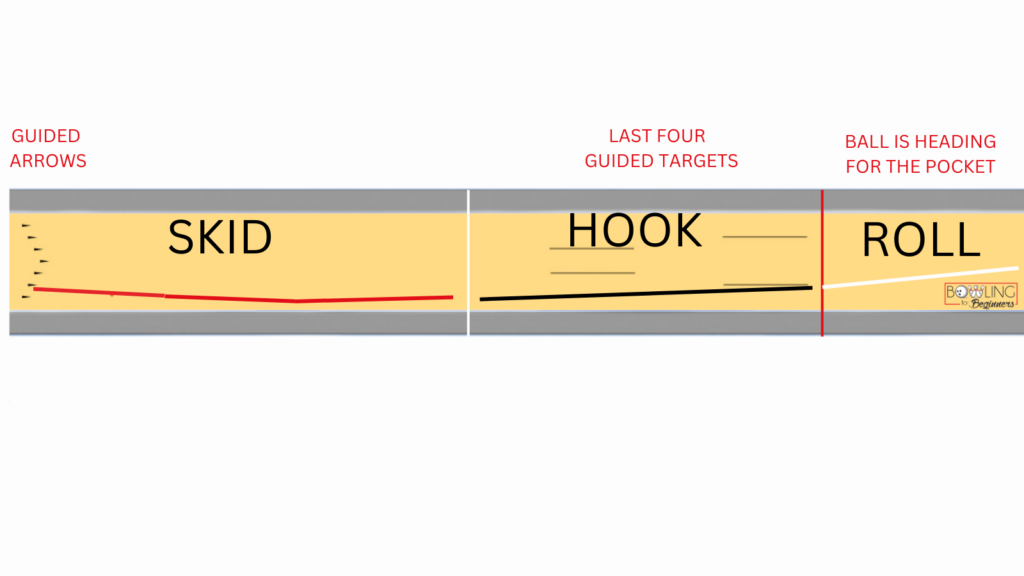
Pin Deck
From the headpin down the lane, the pin deck will normally extend 2 feet and 10 3/16 inches (0.8683625 meters). The pin deck is followed by a 3-inch tail plank. The bowling pins sit is a triangular formation on the pin deck. Each pin sits 12 inches (0.3048 meters) from its neighbor.
As the bowler, this is where you look for the pocket to strike. Pockets are located between pin 1 and pin 3 for right-handers, and pin 1 and pin 2 for left-handers.
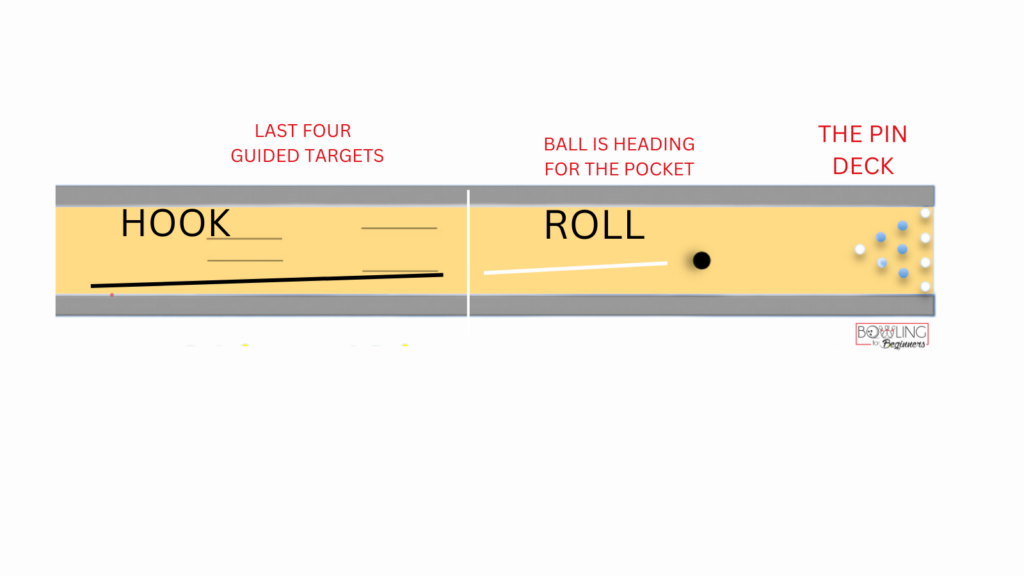
Are All Bowling Alleys the Same Length?
The bowling alley lane's length will vary, although the minimum length of 60’ applies for regulation alleys and duckpin bowling.
The length may vary based on the amount of space available for the bowling alley.
For that reason, you’ll find bowling alleys as long as 87’ or as short as 60’.
How Long/Wide is a Mini Bowling Alley?
Don’t have enough space for a regulation-size bowling alley? Go for a mini-bowling alley instead. The average mini bowling system can easily fit into space around thirty-six feet (36') to forty-five feet (45’) long.
However, the length and width of mini bowling alleys also differ depending on the available space.
The shortest length of a mini-bowling alley you’ll find is around twenty-seven feet (27'), with the average length being thirty-six feet (36') to forty-five feet (45').
The width of these mini bowling alleys typically comes in at fourteen feet (14') for a pair of lanes.
Are Home Bowling Alleys Smaller Than Regulation Bowling Alleys?
How long are home bowling lanes? Given the average lane length and lane width of a regulated bowling alley, home bowling alleys are far smaller and narrower.
The mini alley will feel small for those used to bowling on a regulation alley. You may even need to adjust your bowling technique to get the results you’d typically get at a commercial bowling alley.
Space Required for A Home Bowling Alley
When determining how long is a bowling alley and the space requirement, a home bowling alley's dimensions will vary based on the buyer’s preferences and the size of the room it's in.
Anyone interested in purchasing a home bowling alley will need to consider the bowler’s area, the pinsetters, the lanes and their spacing, and the length of the lanes themselves.
Assuming the minimum size for everything, the smallest room you can house a home bowling alley in is approximately seven hundred square feet (700 sq. ft.
However, if you want a bit more room to play with and some slightly longer lanes, you may be looking at anywhere between eight hundred square feet (800 sq. ft) and nine hundred square feet (900 sq. ft).
Space Required for a Regulation Bowling Alley
You’ll need a space at least 100 feet long or wide for a regulation bowling alley. This room size will not only accommodate the lane, but the pinsetter, ball return system, and other odds and ends.
If your property doesn’t allow for such space, you’ll need to knock out some walls or opt for a smaller overall bowling alley.
Other Bowling Alley Size Considerations
To purchase a bowling alley for residential use, you need to look at more than the dimensions shared earlier.
Though knowing the average sizes is important, you’ll need to consider several other things to ensure that your bowling alley is a good fit for your household. Here they are:
How often do you plan on using it?
Anyone who doesn’t plan on using their bowling alley often may want to opt for a smaller one. Why? If you only use your bowling alley occasionally, chances are you won’t want it to take up a ton of space.
On the other hand, if you’re a true bowling buff, you may want to go as big as you possibly can. In that case, go for a regulation-sized bowling alley.
How much bowling alley can you afford?
A regulation-length home bowling alley (assuming you already own the land it's going on) will likely cost anywhere between $120,000 to $150,000 for a simple two-lane project.
The cost will vary depending on how many extras you want your home bowling alley to have and if you want to trick it out with more high-tech equipment or not.
The obvious alternative is a mini-bowling alley, which is a lot more cost-effective. At the top end, a mini-bowling alley will probably cost around $50,000 to install, including two lanes and bowling balls and pins.
At the cheaper end of the scale, mini alleys can be constructed for as little as $18,000, although their performance and durability over the long term may be questionable.
Putting the time and effort into figuring out what you want from your home bowling alley will help narrow down your options.
What size bowling alley are you used to playing on?
It may not be readily apparent, but the size of a bowling alley can affect your skill level and scoring ability. For instance, if you’re used to playing on a mini-bowling alley, you'll notice the difference when you switch to a regulated bowling alley. Your game may suffer to the point that you become frustrated.
The same goes for the reverse; switching from a regulation bowling alley to a mini-bowling alley may be underwhelming. In most cases, the experience of a regulated bowling alley is impossible to replicate with a mini-bowling alley.
Does Bowling Alley Size Matter?
The size of your bowling alley does matter. A bowling alley that’s not the right size can result in more disappointment than fun.
Consider a case where you need a bowling alley for kids – a regulation-sized alley may not be the right choice.
The kids may find throwing the ball hard enough to hit the pins difficult.
Likewise, a mini-bowling alley may not be long enough for adults, leading to a bowling experience that’s less than a challenge.
How many boards are on a bowling lane?
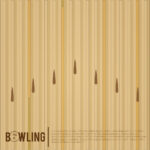
39- typically, there are 39, 1.06 inch (0.026924 meters) boards on a bowling lane.
Depending on the bowling center, this isn't always the fact. The fact is, a regulated bowling lane's width must be 41 ½ inches wide, give or take ½ an inch.
How much does a home bowling alley cost?

Any from $80,000- $190,000, give or take.
The cost of having a bowling alley installed in your home will depend on a few things like, what size lane you want, and do you want multiple lanes, and of course, special features. We want to help you think through the process of getting a bowling alley in your home, so we researched for you to note a few things as you consider like, making sure there is proper ventilation and maintenance cost before adding a bowling alley to your home.
How far apart is each pin?
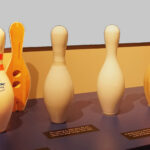
12 inches. Bowling pins are set up at 12 inches away from its neighboring pin.
In a regulated pin formation, bowling pins are in a triangular formation and are 12 inches from each other. This distance is perfect to knock down pins and to create pin carry (think domino effect) on the pins closest to it.
Are all bowling lanes the same length?

Yes. All regulated bowling lanes are 60 feet long.
This measurement is from the foul line to the headpin. In addition, the width of regulated lanes is 41.5 inches, give or take half an inch. These measurements will have very little, if any, impact on your bowling performance and experience. They simply create consistency regardless of where you bowl. Of course, miniature bowling is different.
Related Articles
There you have it – while regulation bowling alleys have standard size rules, home bowling alleys are much more customizable.
If you want a bowling alley for your home, it’s crucial to take ample time to figure out just how large it should be.
Consider your home size, who will be bowling at your place, how much of a bowling fan you are, etc. Once you’ve chosen the perfect bowling alley size, you can proceed to the next step of the process – purchasing and installing it.
We hope that this article has been helpful to you, having given you in-depth information about bowling alley sizes and how to choose the right one for you.
Kira Byrd, a Certified Fraud Examiner, holds a B.S. in Accounting from the University of Alabama at Birmingham. With a passion for bowling from her childhood, Kira has poured her expertise and personal experiences into creating and nurturing Bowling For Beginners. Kira's mission is to meet new bowlers where they are and guide them toward consistently achieving higher scores. With a focus on skill development and strategic techniques, she empowers readers to take control of their game and unlock their true potential.
Bowling For Beginners embodies strict editorial integrity, ensuring reliable and unbiased information. Kira's commitment to delivering valuable insights and practical strategies is reflected in every article. Here's an explanation of our editorial policy and how we get money.





